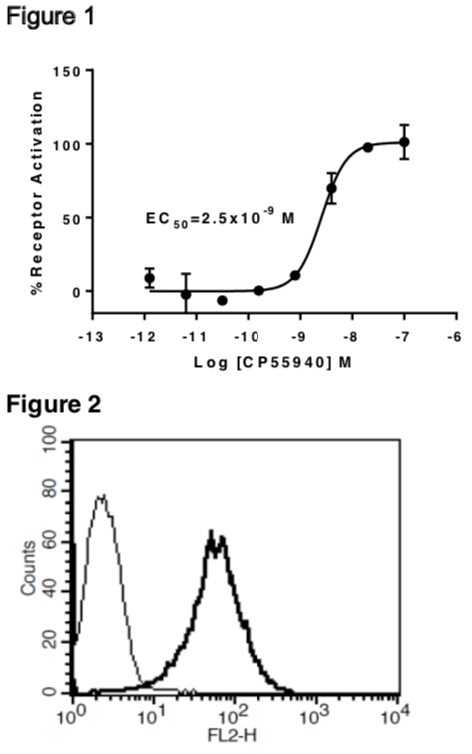Product Information
Catalog Number:
C1512-1
Lot Number:
C1512-1-072117
Quantity:
1 vial (2 x 106) frozen cells
Freeze Medium:
Cell banker 2
Host cell:
CHO-K1
Transfection:
Expression vector containing full-length human CB1A cDNA (GenBank Accession Number: X81121) with FLAG tag sequence at N- terminus.
Recommended Storage:
Liquid nitrogen upon receiving
Propagation Medium: DMEM/F12, 10% FBS, 10 μg/mL puromycin
Stability:
Stable in culture for minimum of two months
Data Sheet
Background: Cannabinoid Receptor 1, CNR1 also known as CB1, is involved in cannabinoid induced CNS effects. It acts by inhibiting intracellular adenylate cyclase activity and could be a receptor for anandamide. CNR1 is a potential target for the development of novel therapeutic drugs in the treatment of various conditions, such as pain, feeding disorders, vascular disease, Parkinson’s disease, and other central nerve system disorders. CB1A is a truncated isoform of CB1 mutant which is resulted from the removal of 89 amino acid in N-terminus and substituted with 28 amino acids by frame shift. This mutant is distributed throughout the brain and peripheral tissue together with CB1.
Application: Functional assays

Figure 1. Dose-dependent inhibition of forskolin-stimulated intracellular cAMP accumulation upon treatment with ligand, measured with MultiscreenTM TR-FRET cAMP 1.0 No Wash Assay Kit (Multispan MSCM01). Figure 2. Receptor expression on cell surface measured by flow cytometry (FACS) using an anti-FLAG antibody. Thin line: parental cells; thick line: receptor-expressing cells.
References:
Gerard, C., C. Mollereau, et al. (1990). “Nucleotide sequence of a human cannabinoid receptor cDNA.” Nucleic Acids Res 18(23): 7142
Mendizabal, V. E. and E. Adler-Graschinsky (2003). “Cannabinoid system as a potential target for drug development in the treatment of cardiovascular disease.” Curr Vasc Pharmacol 1 (3): 301-13
Rinaldi-Carmona et al.. (1995) “Characterization of Two Cloned Human CB1 Cannabinoid
Receptor Isoforms” JPET(278): 871-875
